4 Evolving Technologies That Are Empowering Chatbots
Chatbots are already transforming industries across the board—and they’re only going to become more impactful as technology evolves.
A chatbot is a piece of software that can communicate with users in a back-and-forth, conversational way. All kinds of different businesses and organizations are starting to use them because they can:
- Automate and scale routine support functions
- Provide education and information in a friendly, digestible style
- Guide shoppers to boost e-commerce sales
- Generate and qualify leads
- Engage users in an exciting new way

Chatbots have already touched businesses in most major industries. From Banks and Restaurants to construction companies and e-commerce stores, brands of all types and sizes are starting to unlock the power of bots.
It’s not just businesses that are benefiting from them, either. Nonprofit organizations and educational institutions are putting them to good use, too. For example, look at:
- Mara, an approachable, knowledgeable chatbot who provides sexual-health information for young people
- Ed, a bot that acts as a university professor’s assistant to help master’s students better grasp the course material
- Ally, a bot that helps housing associations and charities answer questions and provide information to vulnerable residents
Read More: Efficient Ways the AI Will Boost Your E-Commerce Sales
Chatbot technology is developing quickly—and so are technologies that can support it. More and more brands will start offering chatbot-based solutions for their users, thanks to emerging tools that are expanding bot capabilities. Here are four of them, and how they’re evolving to make chatbots even more powerful.
1. AI and NLP
There are essentially two types of chatbots:
- Chatbots based on pre-set, Q&A scripts, where users respond by selecting buttons instead of typing themselves
- Chatbots based on Artificial Intelligence (AI) and Natural Language Processing (NLP). These bots are intelligent and can “learn” over time to respond like humans would to free-form user inputs
The first type of bot is the easiest to implement, and can still make a major impact on a business or other organization. They’re simpler to build and will be consistent when interacting with users. They can help brands save time and money, and even increase revenue and improve the customer experience.
Bots that use AI and NLP have become more and more popular lately too. The way bots are “taught” things with this technology is already evolving and will improve.
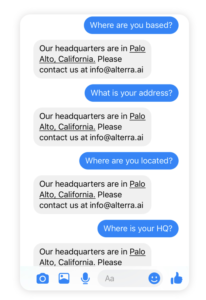
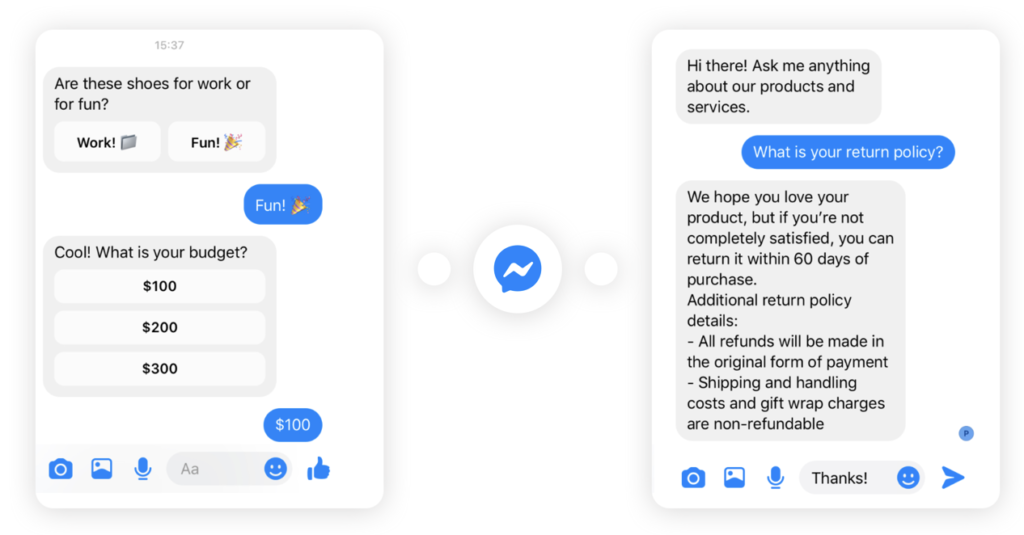
AI and NLP are the future of chatbots. Advances in both will mean that chatbots will be able to:
- Respond accurately to most any input. They’ll have the ability to be prepared for anything and to collect information for analysis and use.
- Develop an EQ, or sense of emotional intelligence. It’ll make them seem more human, and better able to detect the intent behind user messages.
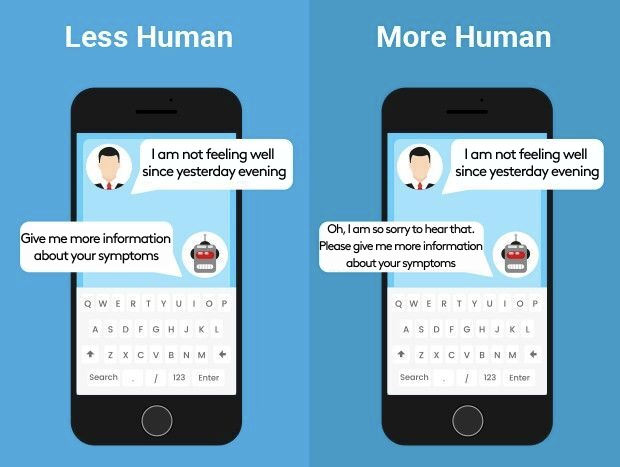
AI and NLP help chatbots interact in a more human-like way.
2. Tools for E-Commerce
Chatbots have proven to be highly effective at increasing sales for many types of businesses. For example:
- A real estate agent can use a chatbot to gather and qualify leads to save time and get more buyers
- A beauty salon can use a chatbot to attract new clients and allow them to book appointments in a few taps or clicks
- A restaurant can use a chatbot to accept to-go orders or dining reservations
These are all common and impactful applications of chatbots. But there’s one type of business that has benefitted even more from bots lately: online-only brands.
It makes perfect sense. Since 100% of e-commerce business happens on a screen, chatbots can be with shoppers every step of the way. They can:
- Attract prospects by popping up with offers or answering product questions
- Bring shoppers back if they abandon their cart
- Follow up after purchase and ask for feedback and reviews or offer discounts on future purchases.
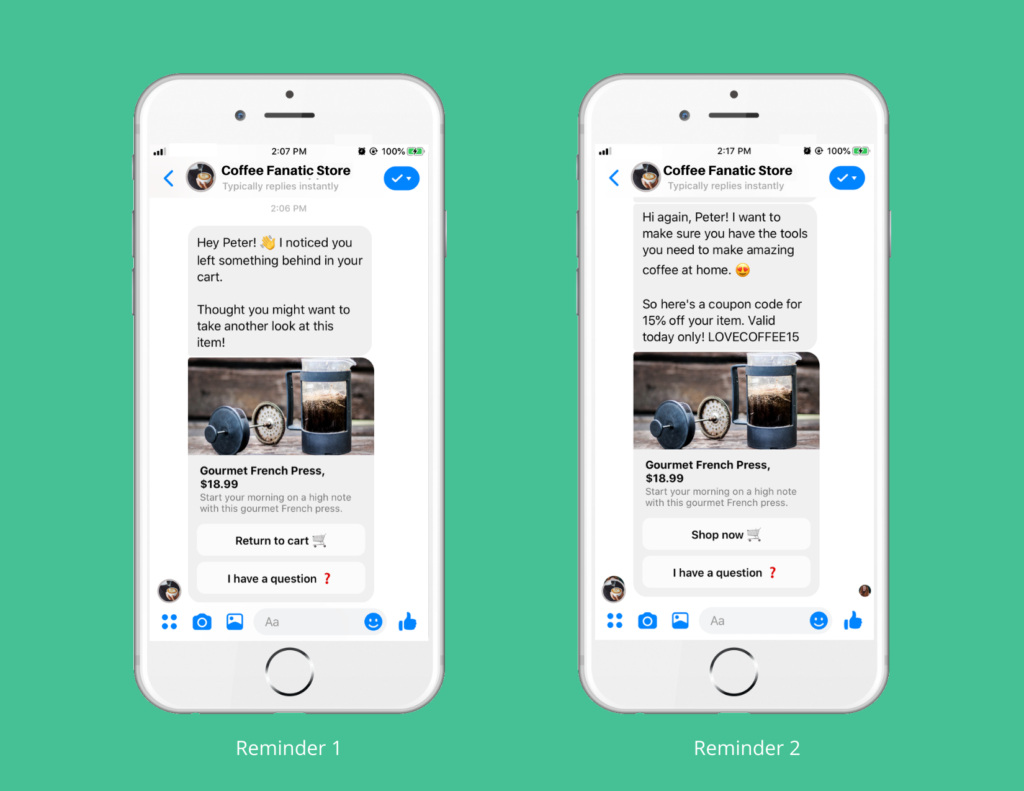
There have been lots of new tools and plugins for e-commerce chatbots in the last few years, because online stores are a perfect bot use case. It won’t stop here; expect bots for online stores to continue to get more robust.
Read More: Using AI and Personalization to Provide a Complete Brand Experience
3. Voice-Activation Technology
Voice-activated chatbots interact with users via pre-recorded audio responses instead of written text. Two of the most popular examples are Google Home and Amazon Echo. Ownership of smart speakers like these rose 40% in the US last year alone because the tech that powers them is constantly improving.
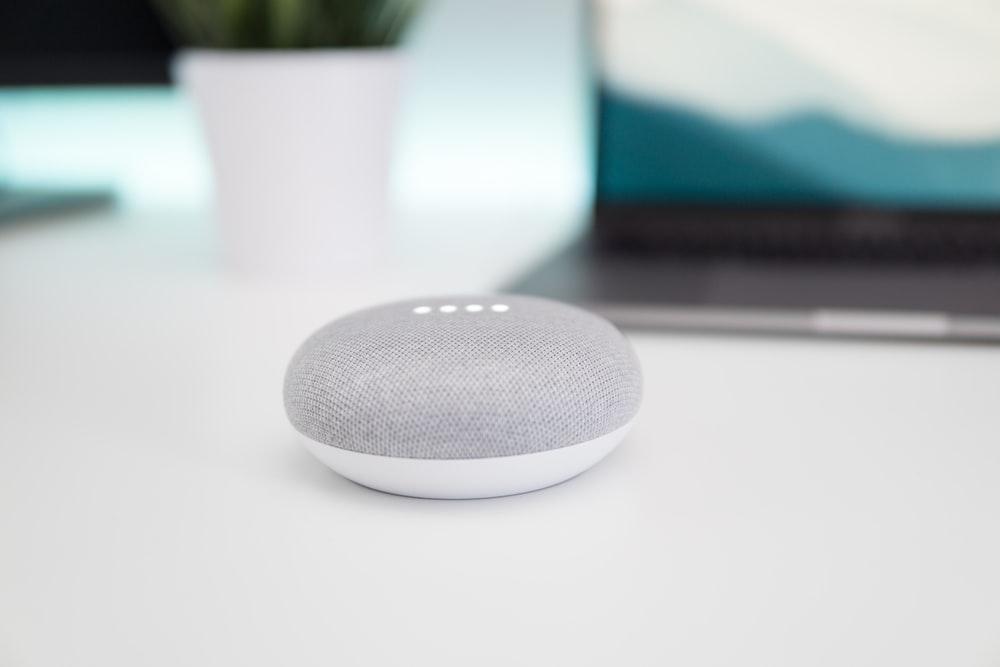
While Voice-activated chatbots can be used for businesses, they aren’t right for every type because:
- They can be expensive to set up. There are platforms that let you build text-based chatbots for free. To build a quality voice-based bot, however, will generally run up a considerable bill.
- They often exist on a separate device. Voice-based bots can live on computers and smartphones in some cases. But usually, they require the user to buy a separate device like a smart speaker.
However, both of these obstacles will fall away over time. Voice bots are only growing in popularity, and the technology that powers them is sure to keep up.
This type of chatbot is hands-free, immediate, and engaging. Plus, speaking is quicker and more natural for humans than typing, so many users feel more comfortable with Voice-activated bots. While their technology hasn’t been perfected yet, expect it to improve by leaps and bounds in the next few years.
Read More: How to Invest in a Recruiting Chatbot Based on What Your Applicants Want
4. Interoperability
Today, chatbots exist separately in many different places: on websites, in Facebook Messenger, on WhatsApp, on Slack, on smart speakers, and more. But someday soon, these bots might be able to speak to each other.
Interoperability is another emerging concept that would make chatbots even more useful.

Interoperability among bots on different platforms would mean ultimate ease of use. You could chat with a bot on Facebook Messenger to browse products, then ask your smart speaker to order one specific one for you later once you’ve made up your mind. Or, you could make an appointment for a haircut via a salon’s website chatbot, and get a reminder the day before via WhatsApp. Facebook is already working on interoperability for its family of apps. This concept on a wider scale may not be far behind.

The Future of Chatbots Is Bright
Chatbots on their own are already a powerful technology. They can provide engaging service and information automatically, instantly, and at scale. But when coupled with other advancing technologies, they’ll soon be even more useful for individuals, businesses, and other organizations.
Read More: Using AI for Mobile App Development

Comments are closed, but trackbacks and pingbacks are open.